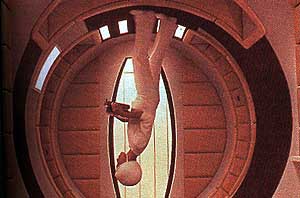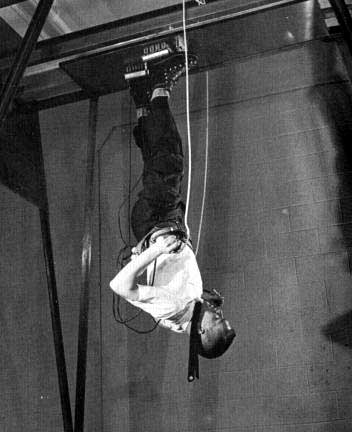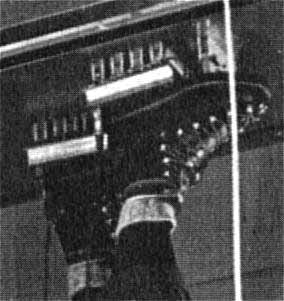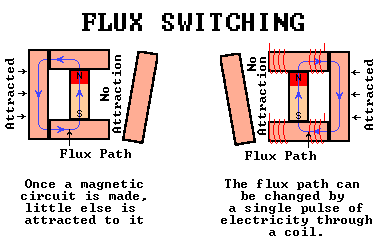|
Well, it doesn't take a genius to see that, when you can
switch a permanent magnet's fields easily, and the magnet also
has a built-in memory as did the Radus magnets, then with a
little ingenuity in switching one could use such switchable
magnets to produce a self-switching, self-powered permanent
magnet motor. The magnet, being a permanent dipole, is already a
particular kind of "free energy generator", since it
continuously gates magnetic energy directly from the vacuum due
to its asymmetry in the energetic vacuum flux.
From the energy barons' viewpoint, those Radus magnets and
Radus boots had to go, and go quickly. And go they did.
So NASA then developed the present "shuffler" kind
of magnetic boots where the astronaut can't pull his boot loose
from the surface, but must "scoot" his feet along in a
sliding and painfully awkward fashion. That way, you see, no one
can use the boot magnets which now are just rather ordinary
permanent magnets, without memories and without switchable fields
to make an overunity device or a self-powering permanent
magnet engine.
 In the originals developed by Radus et al. at
Westinghouse, the magnetic fields themselves from permanent
magnets were simply switched! And the magnets had a
memory. (So far as is known, even today no one tells you that in
many virgin magnets fresh from the factory, their very first use
conditions them with a memory! That fact can be used, e.g.,
to create magnets whose fields appear normal, but which deviate
from the normal behavior of ordinary magnets, including produce
anomalies in their magnetic fields. In the originals developed by Radus et al. at
Westinghouse, the magnetic fields themselves from permanent
magnets were simply switched! And the magnets had a
memory. (So far as is known, even today no one tells you that in
many virgin magnets fresh from the factory, their very first use
conditions them with a memory! That fact can be used, e.g.,
to create magnets whose fields appear normal, but which deviate
from the normal behavior of ordinary magnets, including produce
anomalies in their magnetic fields.
That subject the deliberate induction of magnetic memory
into a virgin permanent magnet with its first use cries out
for a sharp young graduate student to do substantial, pioneering
research on that phenomenon, and do his Ph.D. thesis on it. There
is a Nobel Prize waiting there for a future sharp young scientist
who fully deciphers that "magnetic memory conditioning"
mechanism. The entire subject of making permanent magnets with
memories, and how to use such in operational systems, is still a
largely unexplored, extremely obscure territory. In fact, most
researchers are not even aware that the phenomenon exists. The
energy barons like it that way!
Anyway, back to the Radus boots. With them, the astronaut
could actually lift his boot and take a rather normal-like step.
So obviously those boots vanished only a few years after their
development.
How the True Magnetic Boots Information
Was Recovered
It took some real doing to run down the true story of the
vanishing Radus boots. Most of that marvelous work was done,
unfortunately, before the big computer data bases really got
going. Much of the earlier work is just not in there in the
computerized databases. So one drew pretty much of a blank
(except for the later "shufflers") when searching those
databases on descriptors and terms related to the astronauts'
magnetic boots.
An excellent researcher, John Reed, came to the rescue. John is
a researcher of first rank. He actually found Radus' sister (Radus
was deceased), who very graciously permitted access to some
personal files Radus had left. With her permission, John copied
the files. So that way much of the odd story of the real astronauts'
magnetic boots was able to be reconstructed, before spin control was applied by you-know-who.
We certainly express our sincere appreciation to Radus' sister
for her gracious assistance and kindness. We give full credit to
John Radus for the invention of the switchable magnet and the
conditioning of magnets with a memory. And we express our deep
appreciation to John Reed for exerting so much effort to find
something that was intended by certain parties to have
disappeared from history, or at least to have faded into
comfortable obscurity.
If you're interested in permanent magnet engines, be sure to
check the Radus' references cited at the end of this
article, and
be sure to check the Kawai references.
The Researcher Must Understand Nonlinear
Magnetic Materials Phenomena
And as an aside to the beginning magnetics engine researcher
who does not have a good knowledge of magnetic materials, here's
some advice. You must get beyond the shallow view of "a
magnet has a north and south pole and a field between them"
and beyond the notion of just "simple magnetic domains"
you know, the notion that "big magnets are made of
littler magnets." You must get much deeper into magnetic
materials and their behavior.
Magnetic materials are highly nonlinear. It's not as simple as
just "aligning domains". There are lots of nonlinear
phenomena going on in magnets other than what is induced by
simple north and south poles! The field from every permanent
magnet has an internal, hidden, dynamic structure. There are dynamics
going on inside the field of a permanent magnet, and comprising
that field. There are at least 14 kinds of magnetism and in
fact, more than that if you check Ehrenhaft's work on magnetic
monopoles, as validated by Mikhailov and Barrett, and if you
check Evans' and Vigier's work on the B(3) scalar magnetic field
that arises from a topological magnetic monopole and is evidenced
in interferometry, e.g. and other experiments.
Magnetism is intimately connected with the spins of the
fundamental particles, and you need to understand that area as
well. So unless you wish to be a very naοve experimenter, first
do some heavy homework in the areas of magnetic material
phenomena, different types of magnetism, multivalued magnetic
potentials, magnetic monopoles, interferometry, spin waves and
phenomena, etc. If you can find it, a very good book (one that's
relatively simple for engineers and is straightforward and
understandable) is the out-of-print book by Cullity (cited). If
you're really serious, contact the publisher and get permission
to legally reproduce it at the copiers for a small fee, as we
did. You'll be very glad you did. It's probably the single most understandable
book of its kind. Another very good book to obtain is Burke's
"Handbook
of Magnetic Phenomena" (cited). An extremely useful
"quick reference" book for one's pocket is Kaganov and
Tsukernik, "The Nature of Magnetism" (cited).
Why the Astronauts' Boots Were Changed
But back to the astronauts' boots. Hangar and Rosener (cited)
will fill you in on the present "shuffler" boot. Just
forget those; they are worthless to you as an enterprising
overunity systems researcher. Reading Radus' work (cited) will
clue you in on the earlier, far better boots.
If you dig out some new reference background on Radus' work
and the real astronauts' magnetic boots, please share it
with us, and we'll put it here in this section for everyone.
Why do you suppose NASA replaced that excellent Radus boot
with the far inferior "shuffler" kind later?
You see, if you can easily switch the fields of a permanent
magnet as you wish, and make that magnet also have a memory that
you deliberately conditioned into it, you could also build a
permanent magnet self-powered engine by adapting such memory
(asymmetrical behavior) and switching. It's perfectly permissible
by the laws of physics and the laws of thermodynamics, because
one is using an open dissipative system far from thermodynamic
equilibrium. Any dipole such as a permanent magnet is a
legitimate open system freely receiving energy from its
environment (the active vacuum) and re-emitting some of that
energy in usable Poynting energy flow form.
The other compelling reason is that you don't use electrical
currents back through the source dipoles to kill them! Zounds!
That means you can have one half the solution already
accomplished from the start; you don't have "spent
current" to have to force back through the dipole or shunt
it around freely by some extraordinary means. All you have to
worry about is understanding and very clever and
precisely timed switching. (And it does have to be clever;
let's not belittle the skill and perseverance required to achieve
that task!)
But the Radus boots represented a potent threat to the energy
barons and energy cartels of the world. Therefore those
"field switching" boots had to go. And go they did!
So those trainloads of coal and fleets of oil tankers kept on
coming. And the byproducts of all that hydrocarbon combustion
kept right on polluting the cities and the planet.
Here is an area crying out for Congressional and Senatorial
action. Why not force some of those "government
servants" we taxpayers send so many billions of dollars to,
to go back in there and compile all the available Radus boots
information and data from NASA? And openly release it?
Hey, environmental activists! Are you listening?
References:
-
A. W. Hangar and A. A. Rosener, "The use of permanent
magnets in zero-gravity mobility and restraint
"footwear" concept," IEEE Transactions on
Magnetics, Vol. MAG-6, No. 3, Sept. 1970, p. 464-467.
These crude "shuffler" boots are quite a contrast to
the elegant Westinghouse/Radus "stepping" boots
earlier developed and used by NASA.
-
"Human fly has magnetic sole," Electrical
Engineering, Apr. 1963, p. 294.
-
Raymond J. Radus and William G. Evans, "Apparatus
Responsive to Direct Quantities," U.S. Patent No.
2,892,155, June 23, 1959.
-
R. J. Radus, "Permanent Magnet Flux Transfer
Principle," Internal Westinghouse paper, date unknown; ______
-
NEW
"Permanent-Magnet Circuit using a 'Flux-Transfer'
principle," Engineers' Digest, (Jan. - June
1963), p. 86. (thanks to Suzanne Ament for the
research)
-
J. Astleford, Jr. and R. J. Radus, "Distribution
Transformer with Zero-Percent Impedance," Westinghouse
Engineering, 23(5), Sept. 1963, p. 148-151; ______
"Zero Impedance Distribution Transformer," IEEE
Transactions on Power Apparatus & Systems, 83(9),
Sept. 1964, p. 918-926.
Thanks to Darryl Morris in Australia for
providing the photos of the original Radus boots from the
publication:
"Attraction and Repulsion"
Author: Malcom McCaig Ph.D.
Publisher: Oliver and Boyd ltd - 1967
At the time of writing, McCaig was the assistant Director of
Research for the 'Permanent Magnet Association', Sheffield.
Additional information from Radus family members
Regards to T. E. Bearden.
This device is what the family believes to be a portable demo of Dad's
permanent magnet, with the "sandwich" and coil resting on one of the
attached plates.
Simple, but elegant, as was much of his work.
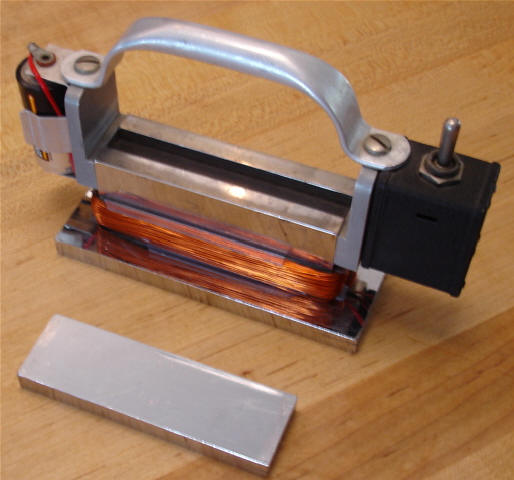
Photos of the original boot
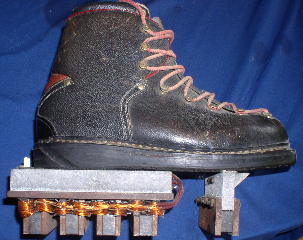
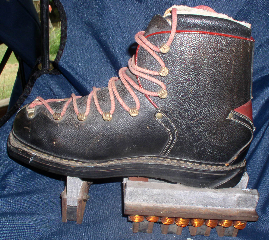
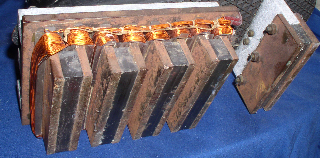
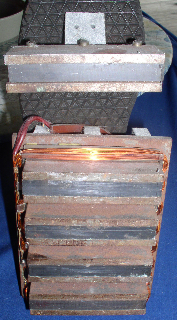
These are drawings of models that we played with as children. The central
sandwich is about an inch square. One of my brothers (out of town) has the
actual. My son did the drawings from my description. He is trying to
replicate the model.
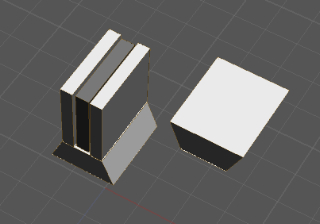
They functioned the same way as did the powered models (shoe and battery
powered test that I had sent previously). One wedge pulls off easily, with
an increase in force required to move the second piece.
No electrical power required.
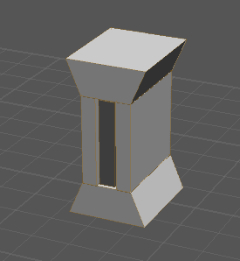
|
